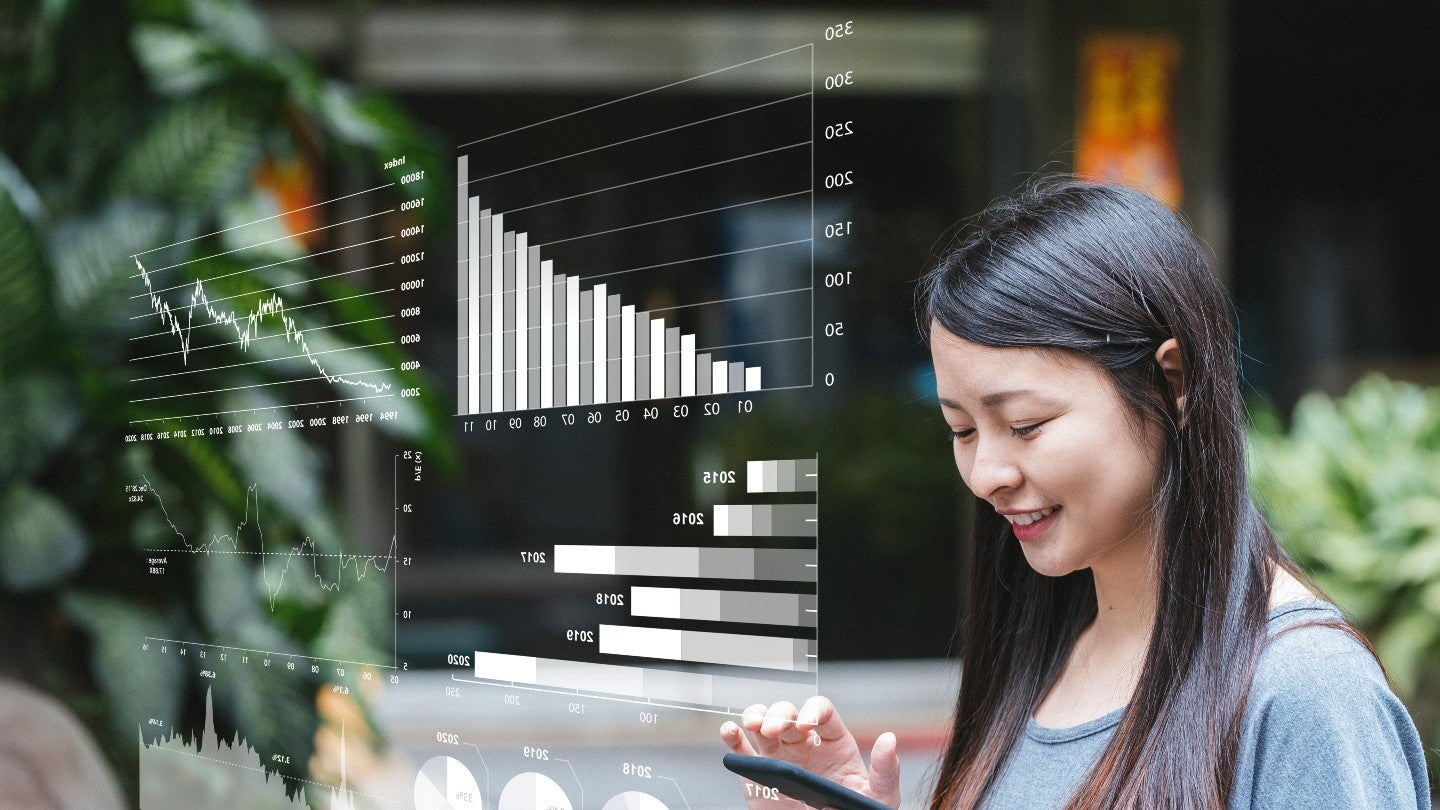
While many of the use cases for the internet of things (IoT) in financial services have been explored, there are still possibilities within wealth management and for environmental, social and governance (ESG) purposes, a new report suggests.
GlobalData’s Internet of Things in Financial Services report takes an in-depth look at look at the impact of the technology across the sector, examining the value chain across the IoT technology stack, providing market size and growth forecasts and exploring how IoT can be deployed to solve the challenges faced by the industry.
The report indicates that the IoT market is reaching maturity but that it is still expected to grow to $65.4 billion by 2027 at a compound annual rate of 13.6%.
As IoT reaches maturity, some businesses are looking at how it can be integrated with blockchain and artificial intelligence (AI).
Suneet Muru, Thematic Analyst at GlobalData, comments: “These technologies will act as optimization layers for the data collected by IoT networks. For example, blockchain can offer security and transparency when keeping data records while AI can offer efficiency when processing large datasets. We can expect more integration of AI alongside IoT devices as it becomes more sophisticated over the next few years.”
IoT is viewed as a technology with widespread use cases across industries, a recent GlobalData survey found. The Thematic Intelligence: Tech Sentiment Polls Q3 2023 survey found that 71% of 368 respodents across GlobalData’s network of B2B websites believed the technology would live up to all of its promise or have at least some use, while only 15% believed it to be “all hype”.

US Tariffs are shifting - will you react or anticipate?
Don’t let policy changes catch you off guard. Stay proactive with real-time data and expert analysis.
By GlobalDataIoT use cases in financial services
The use of IoT in financial services can largely be separated into two categories. The first is the integration of payment options, products and services into devices and user interfaces to boost revenue. Mastercard and Visa, for example, have set their sights on making a wide variety of devices payment-enabled. In 2023, both providers partnered with Mercedes Benz to make payments for fuel possible from a vehicle.
Secondly, IoT offers a huge scope for gathering customer insights and personalisation, especially in the insurance industry. There, the increased adoption of connected devices is allowing insurers to gather data on the likes of property
conditions, driving behaviour and health metrics.
The most visible use of IoT within financial services is in payments with mobile wallets and devices like smartphones and smartwatches. Now, this use case is going even further, such as with biometric-enabled payments and fridges that enable grocery orders.
There are challenges for the evolving IoT-in-financial-services landscape, however. As Muru notes, for example, the insurance industry is already facing data compliance hurdles.
“Most of the complications come from the use of IoT in insurance,” he explains. “Adoption largely depends on how comfortable consumers feel about sharing granular health metrics with insurers. If your insurer tells you that you need to wear a smartwatch around the clock for the next two weeks to get the best life insurance policy, you’ll naturally be inquisitive with regards to what is being measured and how this data is being handled.
“Simply providing guidance and details will likely be enough to reassure existing customers, but more regulation will be needed to onboard sceptics that take a hard-line stance against such practices.”
IoT opportunities in wealth management and ESG
While the payments and retail banking sub-sectors have embraced IoT, wealth management lags behind. The Internet of Things in Financial Services report identifies a couple of use cases that could be explored, however.
Contextual money management would enable anticipatory financial advice, such as notifications about missing bills or overspending. The report notes that Ally Bank in the US uses location data to notify customers when they are entering a ‘danger zone’ where they tend to overspend, for example.
Muru suggests that smart cities will be a key enabler of contextual money management, saying: “Banks could send a warning when customers are in the vicinity of retailers with which they typically overspend. Wealth managers could also use IoT to track physical assets in which they have invested, although this hasn’t been widely explored outside of an ESG context.”
Within ESG, IoT has the potential to help address challenges, such as with environmental sensors that collect real-time data for holding financial businesses accountable to their ESG goals.
Muru notes that, although “IoT-related efforts towards ESG in the financial services sector are sparse”, there are some possibilities regarding ‘spatial finance’.
“This involves integrating geospatial data and analysis into financial theory and practice,” he explains. “Investors can better understand their climate risk exposure if they have tools to model the financial impact of both tangible and non-tangible assets. They can then consider how to mitigate, adapt, or transition their portfolios using this information.”







